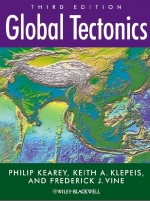Добрый день, Коллеги. Важное сообщение, просьба принять участие. Музей Ферсмана ищет помощь для реставрационных работ в помещении. Подробности по ссылке
Global tectonics / Глобальная тектоника
As is well known, the study of tectonics, the branch of geology dealing with large-scale Earth structures and their deformation, experienced a major breakthrough in the 1960s with the formulation of plate tectonics. The simultaneous confi rmation of sea fl oor spreading and continental drift, together with the recognition of transform faults and subduction zones, derived from the interpretation of new and improved data from the fi elds of marine geology and geophysics, and earthquake seismology. By 1970 the essentials of plate tectonics – the extent of plates, the nature of the plate boundaries, and the geometry and kinematics of their relative and fi nite motions – were well documented.
As further details emerged, it soon became apparent that plates and plate boundaries are well-defi ned in oceanic areas, where the plates are young, relatively thin, but rigid, and structurally rather uniform, but that this is not true for continental areas. Where plates have continental crust embedded in them they are generally thicker, older and structurally more complex than oceanic plates. Moreover the continental crust itself is relatively weak and deforms more readily by fracture and even by flow. Thus the nature of continental tectonics is more complex than a simple application of plate tectonic theory would predict and it has taken much longer to document and interpret. An important element in this has been the advent of Global Positioning data that have revealed details of the deformation fi eld in complex areas. <...>




